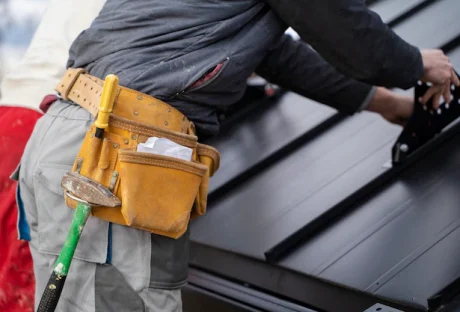Over the years, the perception of gardening has changed from the traditional method of tilling a patch in the backyard for fruits and vegetables to more sophisticated types of gardening. Front yard gardening is steadily taking root in the suburbs as homeowners strive to decorate their front yards with more than hydrangeas in the flower bed.
Needless to say, front yard gardening adds aesthetic value to the property and not just for you but your neighbors as well. In open-plan neighborhoods, exposed front yards call for constant admiration or scrutiny from neighbors who may get upset if they do not approve of what is in your yard.
If you are confused about which plants will be able to uplift the aesthetics of the garden you can always count on experts in the industry. Home and property owners can get a mix of plants selected by Tree Service Roseville that are not only pleasant to look at, but also require low maintenance. This will help you keep your garden in top shape and be appreciated by everyone that visits the same.
5 Essential Tips to Designing a Beautiful Front Yard Garden
An unsightly front yard is likely to hurt your neighbor’s property as well. For instance, if he is trying to sell his home, open house visits with potential buyers will not go well if there are overgrown bushes right next door. Some neighborhood associations go as far as stipulating guidelines on what is allowed in the front yard. If you are contemplating starting a garden in your front yard, read on for useful tips.
 1. Determine Size of the Garden
1. Determine Size of the Garden
How much land you allocate for your front garden is dependent on the size of your front yard; you cannot extend your garden to the neighbor’s property. Consider other activities that go on your front yard, for instance, parking vehicles, a playpen for young children, and so on.
Read also: 3 Amazing Flower Street Garden – How To Design
Planting beds can be horizontal, along with the width of the house, or vertical from the house to the sidewalk to the fence. Leave enough space for a walkway so that people can access the home with ease without the risk of stepping on plants or getting their shoes muddy from dirt.
2. Select Mix of Plants
Once you know how much land is available, identify a plant. Since front yard gardens are meant to enhance the look of your home, avoid monotony in one crop. Try a mix of different plants that will look great when they grow and plants that do not compete for nutrients.
You also need suitable methods of nourishing your plants to give them the best chance of survival. Applying fertilizer and compost will greatly boost the nutrient content of the soil. Whatever plants you settle for, they should not block the view of the street-facing windows as this will block natural sunlight from gracing your living room or kitchen.
Bushy plants with overgrown foliage look unsightly and are likely to mar the look of your front yard. Drop by your local garden store and find the best pole saw for trimming excess foliage to maintain the desired look and avoid harboring pests.
3. Establish Order
While growing a variety of plants in your front yard is encouraged, do not get carried away. Planting too many species affects the appearance of the landscape making looks like different patches of land with no cohesion. This type of mess is best moved to the backyard away from the prying eye of onlookers.
Read also: How to make a perfect summer retreat from your backyard
Gardening experts recommend five to ten species of perennials, three to five shrubs and if you like, add two varieties of trees. Before making a decision, investigate what types of plants thrive in the climatic conditions of your area.
4. Regular Maintenance
Having a front yard garden demands your full attention. You cannot afford to ignore drooping leaves, weak stems, or an insect infestation. Establish a maintenance routine that works well with your other responsibilities such as work or taking care of the family.
Regardless of your schedule, there are important activities that must be done on a regular basis and sometimes daily. For instance, watering, trimming bushes, weeding, etc. You can choose to do this in the evening after work or if you are too busy, enlist the services of a gardener during the day.
5. Year-Round Gardening
When starting a front garden, you want your plants to grow throughout as opposed to only a few months of the year. While not all plants can do well in the dead of winter or the sweltering heat of summer, you can count on evergreen trees and shrubs.
Planting trees in your garden provide a natural fence around your property and trees provide natural shade for smaller plants. A reasonable amount of shade helps to control evaporation in the hotter months of the year
A front yard garden may be the solution you have been looking for since you purchased your home. Gardening is an ideal alternative to mowing the lawn and running sprinklers all day. You do not have to do it all by yourself; involve the rest of the family for some added fun.























